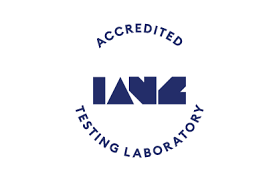FAQ's
How do we know what level of methamphetamine contamination is safe?
Safe levels of methamphetamine are published in guidelines that have been provided by the New Zealand Ministry of Health and Standards New Zealand NZS 8510.
The original Ministry of Health guidelines, published in 2010, were primarily targeted at post-remediation testing of properties that had housed clandestine laboratories. A maximum methamphetamine residue level of 0.5 µg/100cm2 was specified in these guidelines, reflecting the requirements for cleaning up clandestine labs.
However, with the recent release of the new Standard NZS-8510-2017, there are two maximum residue levels, 1.5 µg/100cm2 for high use areas and 3.8 µg/100cm2 for low use areas.
These guidelines apply to results of Individual or Discrete test results. If you have a Composite test result, they do not directly apply to this. Please refer to your sampler for assistance in interpreting the results for a particular property.
What is the effect on human health for people living in a property with P residue?
This is addressed in both the 2010 Ministry of Health guidelines and in the ESR report for the Ministry of Health that was recently published.
What are the different contamination effects between smoking P versus its manufacture?
Both the manufacture and smoking of methamphetamine will leave residue on the property.
For smoking the levels of residue tends to increase as more smoking occurs. Some surface areas may have a higher concentration than others due to the proximity of smoking as well accumulation associated with air flows. There are potential harmful effects of exposure to these residues, especially to infants and young children.
Some forms of methamphetamine manufacture involve hazardous chemicals which are potentially explosive as well as toxic. Residues of these chemicals can remain long after a clandestine lab has been shut down, causing a range of possible health problems for people living in the vicinity.
Along with its health hazards, manufacturing this drug creates a profound environmental impact. For every kilogram of meth manufactured produces 7-10 kilograms of toxic by-product, when disposed of generally effects the following areas:
- Indoor areas; include sinks, toilets, bathtubs, crawl spaces, plumbing traps and floor drains, vents, vent fans and chimney flues.
- Outdoor areas; may include soil, surface water, groundwater, sewer or storm water systems [and on-site effluent treatment systems].
- Outdoor cooking areas could include camping stoves or other outdoor areas where cooking could occur.
Environmental contamination may be caused by spills, boil-overs, explosions, or by chemical fumes and gases created during the heating and distilling portions of the ‘cooking’ process. Indoor areas affected may include floors, walls and ceilings, working surfaces, furniture, carpeting, draperies and other textile products, plumbing fixtures and drains, or heating and air-conditioning vents.
How much will it cost to test / remediate a property?
Testing costs can be estimated by contacting sampling service providers in your region. Typically an initial screening test will provide an inexpensive way of investigating whether any residues of methamphetamine (and precursors) are present in a property. This may be followed up with an in-depth test of individual areas in a property if residues are present, to provide information that can be used to plan and estimate costs of remediation.
As remediation costs vary depending on each property situation, most property owners will obtain a quote prior to engaging remediation services. The levels of chemicals present and where they are present directly impacts the cost.
In general a clandestine lab is likely to cost more to remediate than a property contaminated with smoking only. Decontamination may range from demolition of highly contaminated properties, to the removal of carpets and soft furnishings and cleaning of walls. It may also result in remediation of areas around the property such as soils, drains, etc.
What is happening to ensure there are controls and regulations around service providers?
Standards NZ have released a new set of Standards (NZS 8510) which provides guidance to samplers, laboratories, and those involved in providing remediation services.
What are common signs that there is a P problem with a property?
The following is a list of common occurrences or tell-tale signs of methamphetamine manufacturing. Alone, any of these activities or signs may not mean that drug dealing or methamphetamine manufacturing is occurring. Some or several of them happening together may indicate a problem:
- Frequent visitors at all times of the day or night
- Frequent late night activity
- Windows blackened out or curtains always drawn
- Visitors with expensive vehicles
- Unfriendly people, appearing secretive about their activities
- People watching cars suspiciously when they pass by
- Appearing to be paranoid by exhibiting odd behaviour such as an extensive investment in home security
- Strange odours coming from house or rubbish
- Rubbish has numerous bottles and containers, especially chemical containers
- Putting rubbish out in another neighbour’s collection area

We are trusted experts
As innovators, we also work at the leading edge of new test development so that our customers can complete their latest research and development project, or take their new product or service to market.



